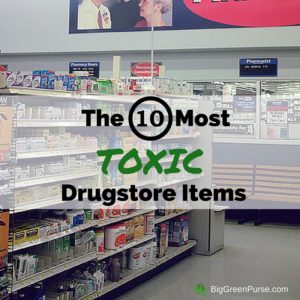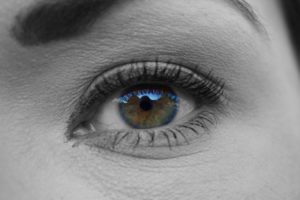Cosmetics and personal care products literally touch every part of our bodies. We’ve been convinced that they’ll make us beautiful. They often make us feel better. But evidence is emerging that the cumulative use of these products may be contributing to asthma, the onset of puberty in girls as young as three years old, and even the feminization of baby boys. Because cosmetics, soaps and shampoos are washed down the drain, they get into our water system, where they’re wreaking havoc on wildlife. And what about their relationship to breast cancer?
While there’s no specific link between any one product and breast cancer, scientific evidence is growing that women face some risk of contracting the disease due to their cumulative exposure to the chemicals in cosmetics and personal-care products.
“Is there a direct connection we can make between the use of these products and breast cancer?” asks Dr. Julia Smith, the director of breast cancer screening and prevention at the Lynne Cohen Breast Cancer Preventive Care Program at the NYU Cancer Institute and Bellevue Medical Center, in New York City. “No. But there are strong scientific suspicions that some of the chemicals found in the environment, including those used in cosmetics and other personal-care items, might increase the risk, especially if there is heavy exposure before the age of twenty-five.”
That’s because these are the years when breast tissue is developing and most susceptible to outside influences. It is possible that multiple exposures to common cosmetics could create a cumulative or “domino effect” that could ultimately result in the disease.
Why aren’t we safe?
Despite these concerns, lipstick, eye liner, nail polish, shampoo, perfume, deodorant and the other concoctions we liberally apply to our faces, lips, eyes, noses, nails, heads, necks, legs, armpits and vaginas are among the least-regulated substances in the marketplace.
It’s true. The makers of cosmetics and personal-care products are not required to meet specific federal standards that guarantee our personal health and safety. The fedral Food and Drug Administration (FDA) requires manufacturers to put a warning statement on the front of products that have not been tested that reads, “WARNING — The safety of this product has not been determined.” But not many of them follow the rules.
Cosmetics companies are not held responsible for the environmental consequences their products have once they escape down the drain, either. Only one state, California, requires cosmetics manufacturers to disclose any product ingredient that is on state or federal lists of chemicals that cause cancer or birth defects.
According to the FDA’s Office of Cosmetics and Colors, which oversees the industry, “a cosmetic manufacturer may use almost any raw material as a cosmetic ingredient and market the product without an approval from the FDA.”
That really makes you want to put your lipstick on, doesn’t it?
The cosmetics industry claims to regulate itself through a board called the Cosmetic Ingredient Review panel. But a report titled “Skin Deep” by the Environmental Working Group (EWG), a non-profit research institute based in Washington, D.C. showed that 89 percent of 10,500 ingredients used in lipstick, nail polish, hair coloring, soap, and other personal-care products have not been evaluated for safety…89 percent. The new video, “The Story of Cosmetics: The Ugly Truth of Toxins In, Toxins Out,” really drives the point home.
What Can You Do? Three things…
1) Shift your spending to safer, healthier products. Fortunately, you’re not completely at the mercy of the cosmetics companies. Every year, consumers (mostly women) spend $50 billion on cosmetics and personal-care products. Individually, that amounts to between five hundred dollars and fifteen hundred dollars that each of us could shift to beauty products and toiletries that are healthier for us and better for the planet.
How do you know what’s healthier? You can compare what you currently use to safer products listed on the Skin Deep data base.
And as a general rule of thumb, you can avoid products that contain parabens, phthalates, synthetic fragrances, and triclosan, while choosing plant-based compounds whose names you can actually pronounce!
Remember that the way you spend your money is your first line of defense. If you don’t buy it, you will be far less exposed to it.
2) Cut back the number of products you use by at least three. Most people use an average of 10 personal care products every day, and some of us apply many more. We do it without thinking: soap and shower gel, shaving cream and aftershave, eye cream, face cream, hand cream, body lotion, foundation, blush, bronzer, lip liner, lip gloss, eye liner, mascara, eye brow pencil, deodorant, nail polish… Do you really need soap AND shower gel? Would an “au naturel” look be just as attractive as one that is more glamourous – and more make-up intensive? Try reducing your beauty regimen by at least three products daily and see if anyone notices. I bet you could take a complete beauty breather once or twice a month with it never registering on the “OMG meter.” If you still need convincing, read this article Nena Baker, author of The Body Toxic, wrote on the Huffington Post.
3) Support passage of a strong Safe Chemicals Act. Versions of legislation to protect consumers from dangerous chemicals have been introduced in both the U.S. Senate and the House of Representatives. The bill would require testing for synthetic chemicals to stay on the market. It would shift the burden for proof of safety to the chemical companies, not consumers. The bill would limit companies’ ability to hide information about toxic chemicals. And it would reduce the public’s exposure to the most dangerous chemicals.
Environmental Defense Fund has launched the “I Am Not a Guinea Pig” campaign to mobilize people like you to urge their member of Congress to support a strong Safe Chemicals Act. You can send your representative and senator a quick e-mail with the click of this button.
There’s no excuse for the threats we face in products we use every day. We’re trading minimal beauty for a beastly outcome. Change can happen, but not unless you act. Do so today.
For more ideas on what you can do, read this month’s Green Mom’s Carnival posts, hosted at OrganicMania by Lynn Miller.


















3 thoughts on “Beauty…or the Beast? Depends on the Safe Chemicals Act.”
Diane,
I love your common-sense approach. Great post and thank you for your contribution to the Green Moms Carnival.
Lynn
I use way fewer beauty products today than I did 10 years ago. And many of the items I use today are not even ‘beauty products’, per se – I wash my face with honey, and I wash my hair with baking soda and apple cider vinegar. And really, there is no obvious difference.
Of course, I don’t read beauty magazines anymore, either. I am so glad to be rid of their message that I somehow need all of this ‘stuff’. Because really, I don’t.
I do occasionally guest post on other blogs, but only about articles relevant to green living, sustainability, and other topics of interest to my community.
Comments are closed.